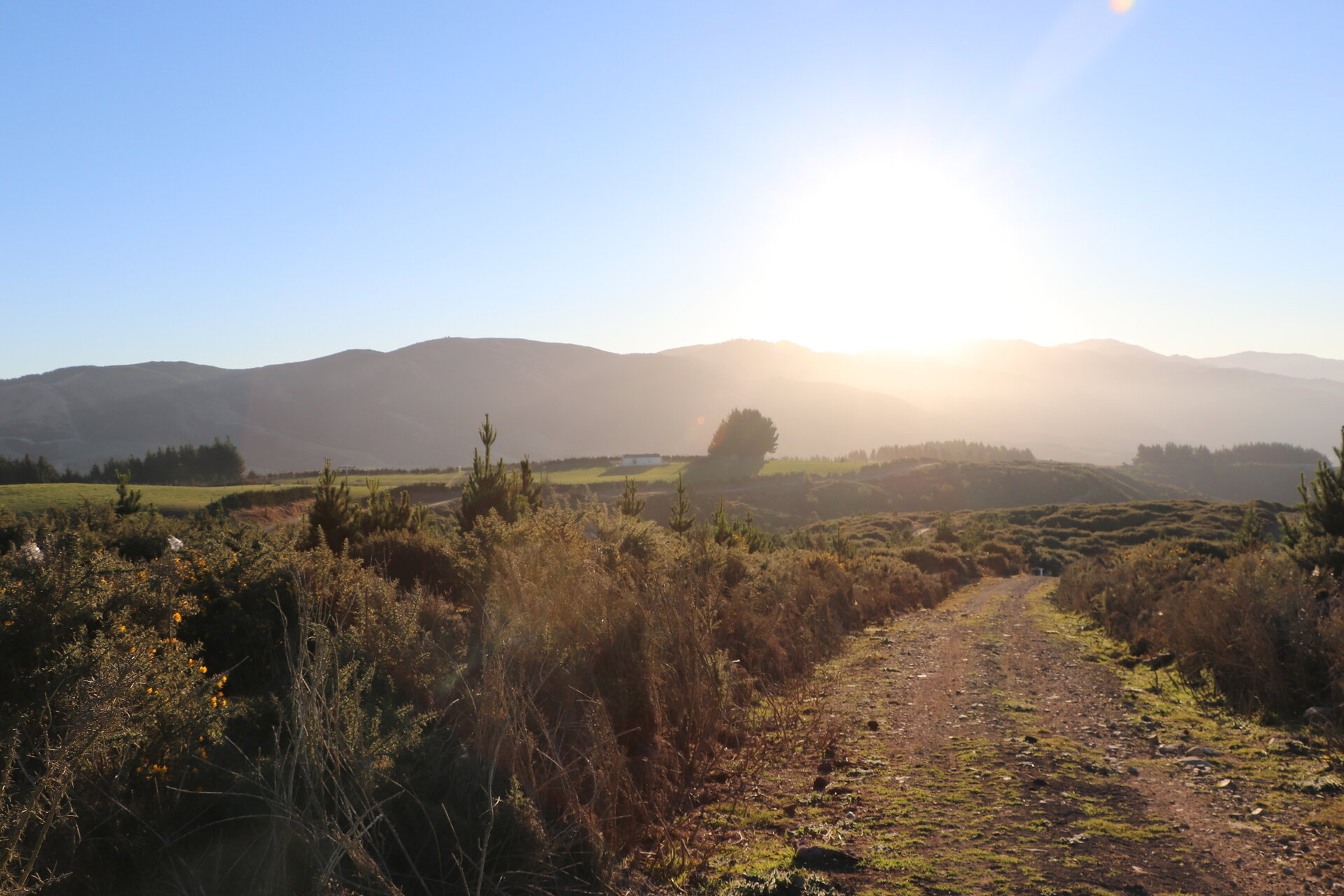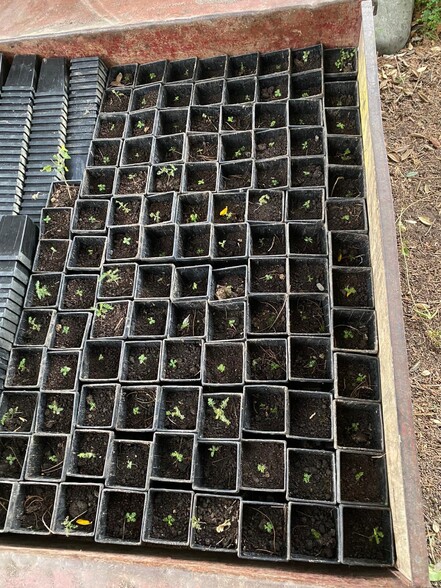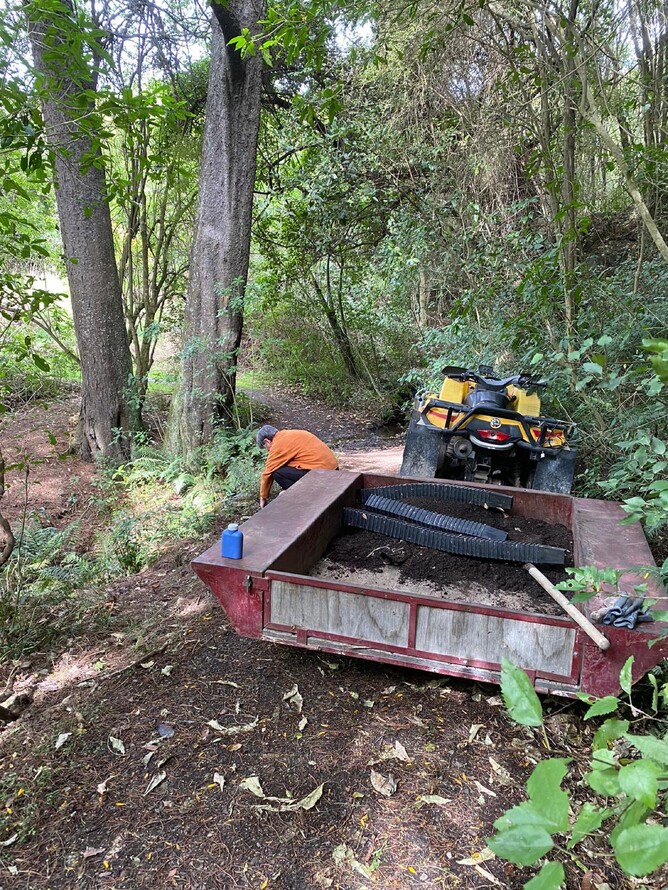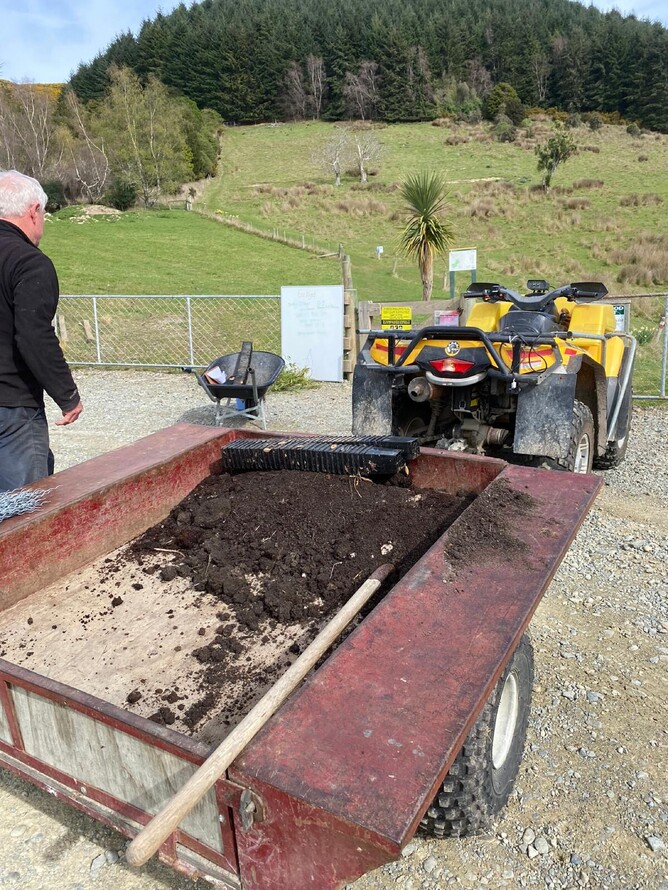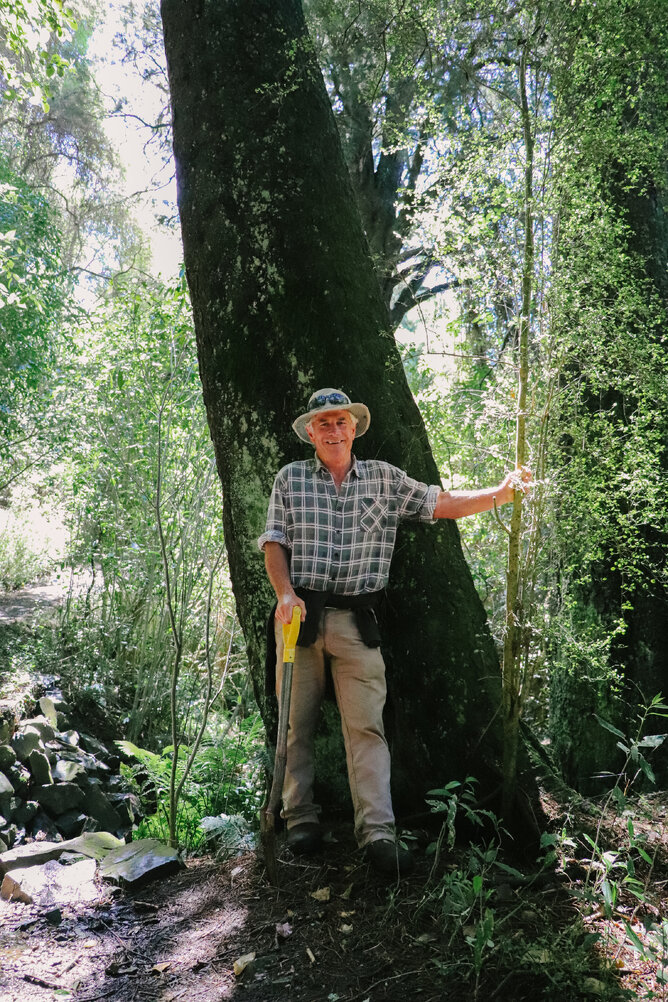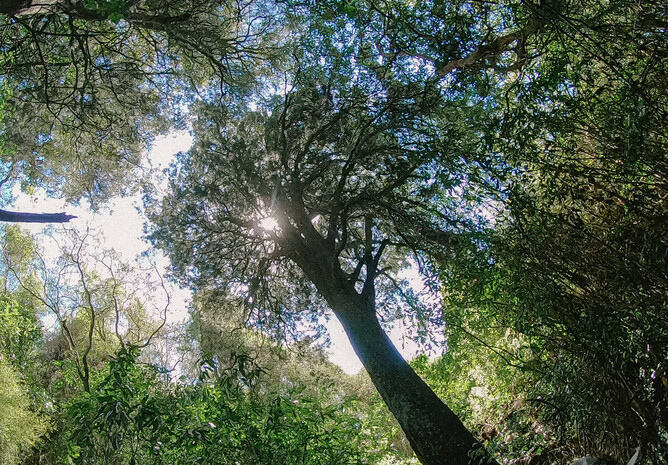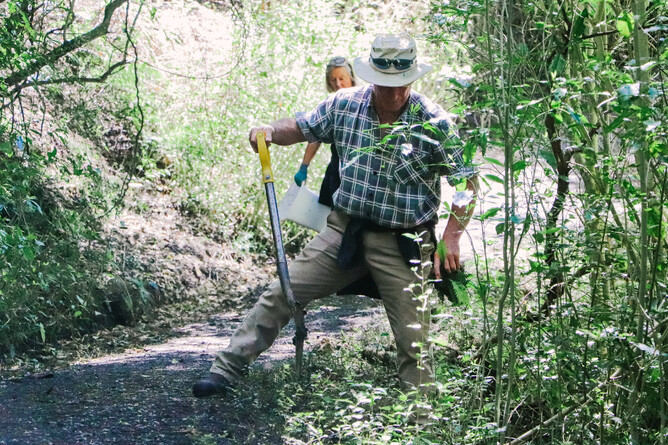Thank you to our volunteers!
As a second part of Sunday’s session (see our blog post on Banana Passionfruit vine control work), volunteers set out to rescue our precious Kahikatea seedlings that have grown below the mature ancient trees here at the Ecosanctuary.
Armed with trowels, small potting containers and soil our volunteers carefully set about uplifting and transplant 2 – 4 cm tall Kahikatea seedlings that have appeared at the base of the giant parent trees at the start of the Whitehorse Walkway.
In total from Sunday's efforts 112 seedlings were potted up and will form part of our Trust's native nursery of seedlings from the Ecosanctuary site to be nurtured for quite some time before they can be planted out to continue their slow growth – eventually (in several hundred years from now) the seedlings will become giants of the regenerated protected forest.
The reason we have our seedling rescue programme for native tree species such as Kahikatea and Tōtara is due to the location these seedlings have naturally started to grow in, they will be at risk currently of browsing/predation from pest species such as Wallaby and Rabbits; alongside being outgrown and competing against many other mature tree and plant species; or simply from being trodden on as many have started to grow on the edges of the walkway - by removing these precious seedlings and giving them a secure environment to mature in our nursery it will ensure their survival. The seedlings will be nurtured and replanted within the Ecosanctuary once our pest and predator proof fence has been completed and all pest/predator species successfully eradicated!
Thank you again to our wonderful volunteers for their time, expertise and care in rescuing these forest giants for the future.
Kahikatea seedling rescue in action - note the two mature ancient Kahikatea parent-trees in the left of this image
"New Zealand’s tallest forest tree, the kahikatea (Dacrycarpus dacrydioides), once dominated the forests that covered much of New Zealand’s swampy lowland areas. Far from a solitary tree, the kahikatea groups closely with other kahikatea, intertwining its buttressed roots with its neighbours for support in the unstable swampy ground. (It is perhaps for this reason that the kahikatea has evolved with such a tall, straight trunk with no lower branches, to enable it to “huddle” with others for stability.) In autumn, throughout the lowlands of New Zealand, numerous forest birds chattered noisily in its canopy, feeding on its abundant red berries. These berries, called koroī, were also a valued food source for Māori, who skillfully climbed up the smooth branchless trunks to harvest them. "
excerpt from http://www.projectkahikatea.ne...
The slewing of our kahikatea forests: how Jurassic giants became butter boxes
by Dr Catherine Knight, envirohistorynz.wordpress.com
Kahikatea are the tallest native tree in New Zealand. These trees can grow up to 80 meters high! That is about the same height as a 40 story building. The Kauri tree has more mass and is wider, but this tree is taller.
